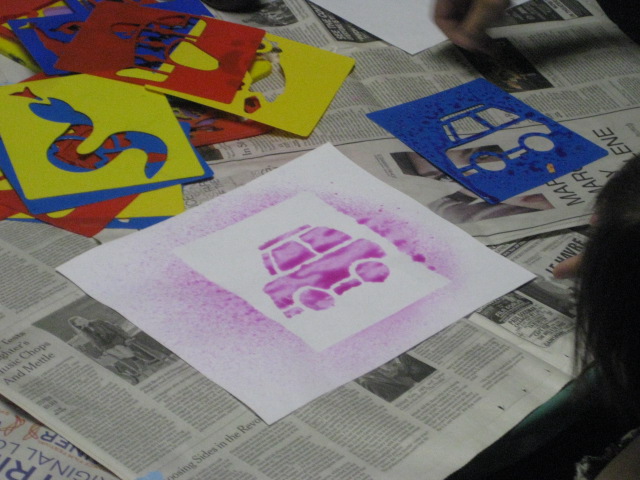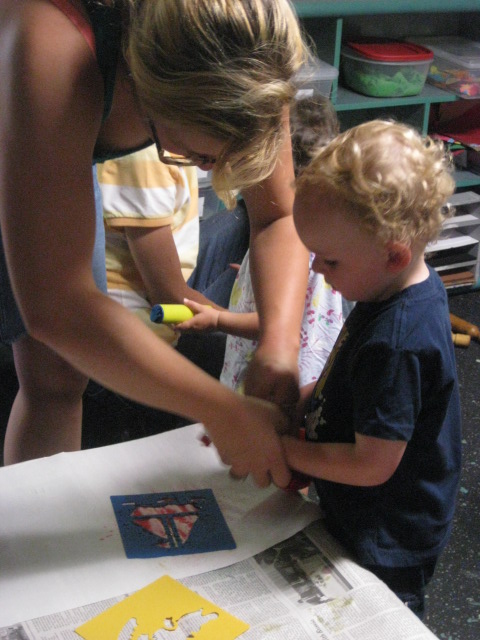Boy, it’s hot out there! We thought we’d cool off in Toddlers, Twos and Threes Art Group with a special painting project – Spray Watercolor Painting!
The process is easy – Using our liquid watercolors, we filled spray bottles with a diluted water-paint mixture that was then used on stencils and paper (as well as free form, without stencils). The results, while a little drippy, were fantastic, as our little artists were able to create instant pictures with a single spray.
For a project like this, any stencils will do, but the general preference was to use larger, half- to full-page stencils. The smaller and more intricate a picture, the less likely the watercolor spray would allow it to come out clearly. Bigger pictures with less detail work better with the drippy paint. Mixing and matching stencils in a single work is definitely recommended – just wait between paint applications to use a new stencil, otherwise the previous stencil picture will smear.
Also, the spray technique works best if the child stands a little farther away from the work. For very young children, help them direct the bottle toward the paper and assist with working the nozzle. Once they get the hang of it, they may be a little spray-happy. Table coverings are a must. (This is also a great activity for outside!)
Of course, not every kid wants to use the stencils. As sprayed freely on the paper, the paint leaves a beautiful pattern. Mixing various colors in little spray “clouds” is a beautiful and simple way to color a blank piece of paper. Wait for the paint to dry and use the work as a background for a drawing or a painting with tempera paints, or reuse as wrapping paper, place mats, or pieces for future collages.
Again, the closer the spray bottle is to the paper, the more concentrated the paint will be. Encourage your kids to experiment with standing farther from the work and spraying, then standing closer and spraying. Ask them if they notice the difference in the painting between distances.
For surfaces, you can start them on paper, but once they’ve mastered spray-painting the page, try out different options. Remember that denser papers soak up the watercolor faster than regular, printer-type paper. Larger spans of paper work especially well here, but you can also use the spray-watercolors on denser papers, diffusion tissue (like coffee filters), or lightly colored textiles. Use the stencil and spray-watercolors on a white piece of cotton and transform a scrap of fabric into a patch or tiny flag. The variations are endless and allow this activity to be fun for a wide range of ages.
The tactile experience of the paint application is doubled up here. First, kids get to use spray bottles, an action that, apparently, many take to very quickly! The second element of tactile input are the watercolor paints themselves. Getting to feel the paint in both spray form and on the page is a great way for kids to experience different levels of dampness.
And don’t forget – this process works great in reverse too! Have your kids flick tiny drops of concentrated watercolor on the paper, then spray with clear water from the spray bottle. The little bits of color become page-wide streaks.
(On really hot days, feel free to turn that clean water spray bottle on yourself and your kids!)
Toddlers, Twos and Threes Art Group meets every Wednesday at 10 am and is open to all members and visitors (with paid admission to PTLL’s playspace). The group is run by Megan Spak and Elisabeth Moyer, with assistance by Emily Fear.





